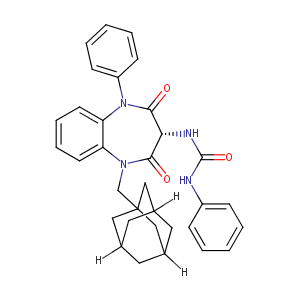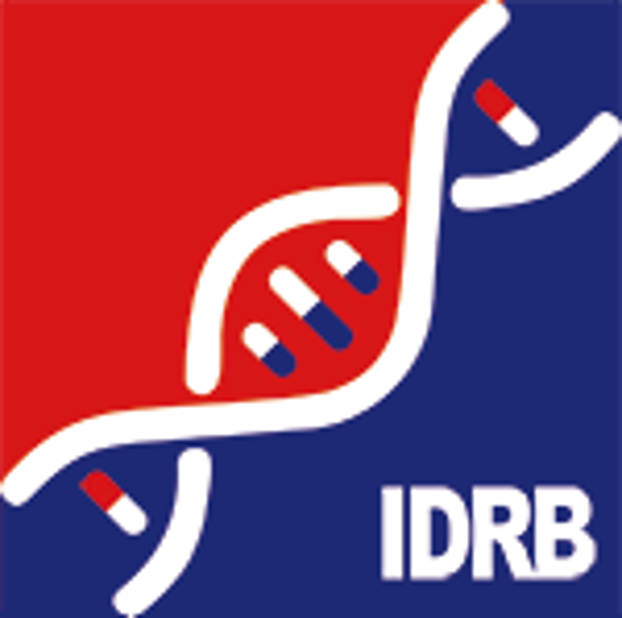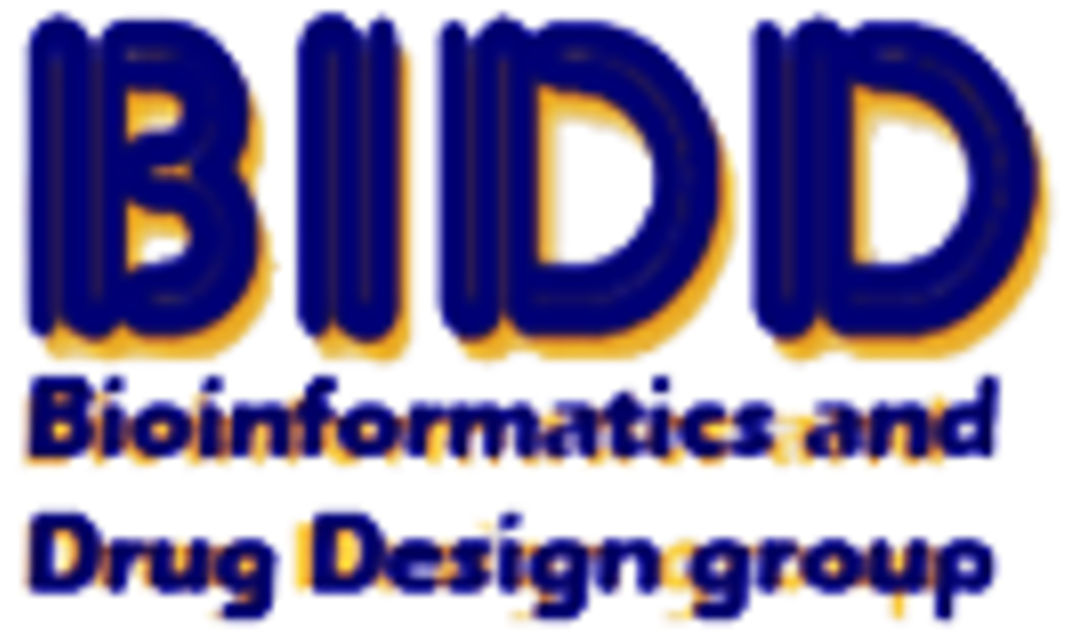Drug Information
| Drug General Information | |||||
|---|---|---|---|---|---|
| Drug ID |
D0X4AV
|
||||
| Former ID |
DNC000712
|
||||
| Drug Name |
GV-150013
|
||||
| Drug Type |
Small molecular drug
|
||||
| Indication | Anxiety disorder [ICD9: 300, 311; ICD10:F32, F40-F42] | Discontinued in Phase 2 | [1], [2] | ||
| Structure |

|
Download2D MOL |
|||
| Formula |
C33H34N4O3
|
||||
| InChI |
InChI=1S/C33H34N4O3/c38-30-29(35-32(40)34-25-9-3-1-4-10-25)31(39)37(26-11-5-2-6-12-26)28-14-8-7-13-27(28)36(30)21-33-18-22-15-23(19-33)17-24(16-22)20-33/h1-14,22-24,29H,15-21H2,(H2,34,35,40)/t22?,23?,24?,29-,33?/m1/s1
|
||||
| InChIKey |
RZERRLOTRSJIAW-NEPGVILWSA-N
|
||||
| CAS Number |
CAS 167355-22-8
|
||||
| PubChem Compound ID | |||||
| PubChem Substance ID | |||||
| Target and Pathway | |||||
| Target(s) | Gastrin/cholecystokinin type B receptor | Target Info | Antagonist | [3] | |
| KEGG Pathway | Calcium signaling pathway | ||||
| Neuroactive ligand-receptor interaction | |||||
| Gastric acid secretion | |||||
| PANTHER Pathway | CCKR signaling map ST | ||||
| PathWhiz Pathway | Gastric Acid Production | ||||
| Reactome | Peptide ligand-binding receptors | ||||
| G alpha (q) signalling events | |||||
| Gastrin-CREB signalling pathway via PKC and MAPK | |||||
| WikiPathways | GPCRs, Class A Rhodopsin-like | ||||
| Gastrin-CREB signalling pathway via PKC and MAPK | |||||
| Secretion of Hydrochloric Acid in Parietal Cells | |||||
| Peptide GPCRs | |||||
| GPCR ligand binding | |||||
| GPCR downstream signaling | |||||
| GPCRs, Other | |||||
| References | |||||
| REF 1 | (http://www.guidetopharmacology.org/) Nucleic Acids Res. 2015 Oct 12. pii: gkv1037. The IUPHAR/BPS Guide to PHARMACOLOGY in 2016: towards curated quantitative interactions between 1300 protein targets and 6000 ligands. (Ligand id: 3503). | ||||
| REF 2 | Trusted, scientifically sound profiles of drug programs, clinical trials, safety reports, and company deals, written by scientists. Springer. 2015. Adis Insight (drug id 800005803) | ||||
| REF 3 | The role of cholecystokinin (CCK), CCK-A or CCK-B receptor antagonists in the spontaneous preference for drugs of abuse (alcohol or cocaine) in naive rats. Methods Find Exp Clin Pharmacol. 1998 Oct;20(8):679-97. | ||||
If You Find Any Error in Data or Bug in Web Service, Please Kindly Report It to Dr. Zhou and Dr. Zhang.

